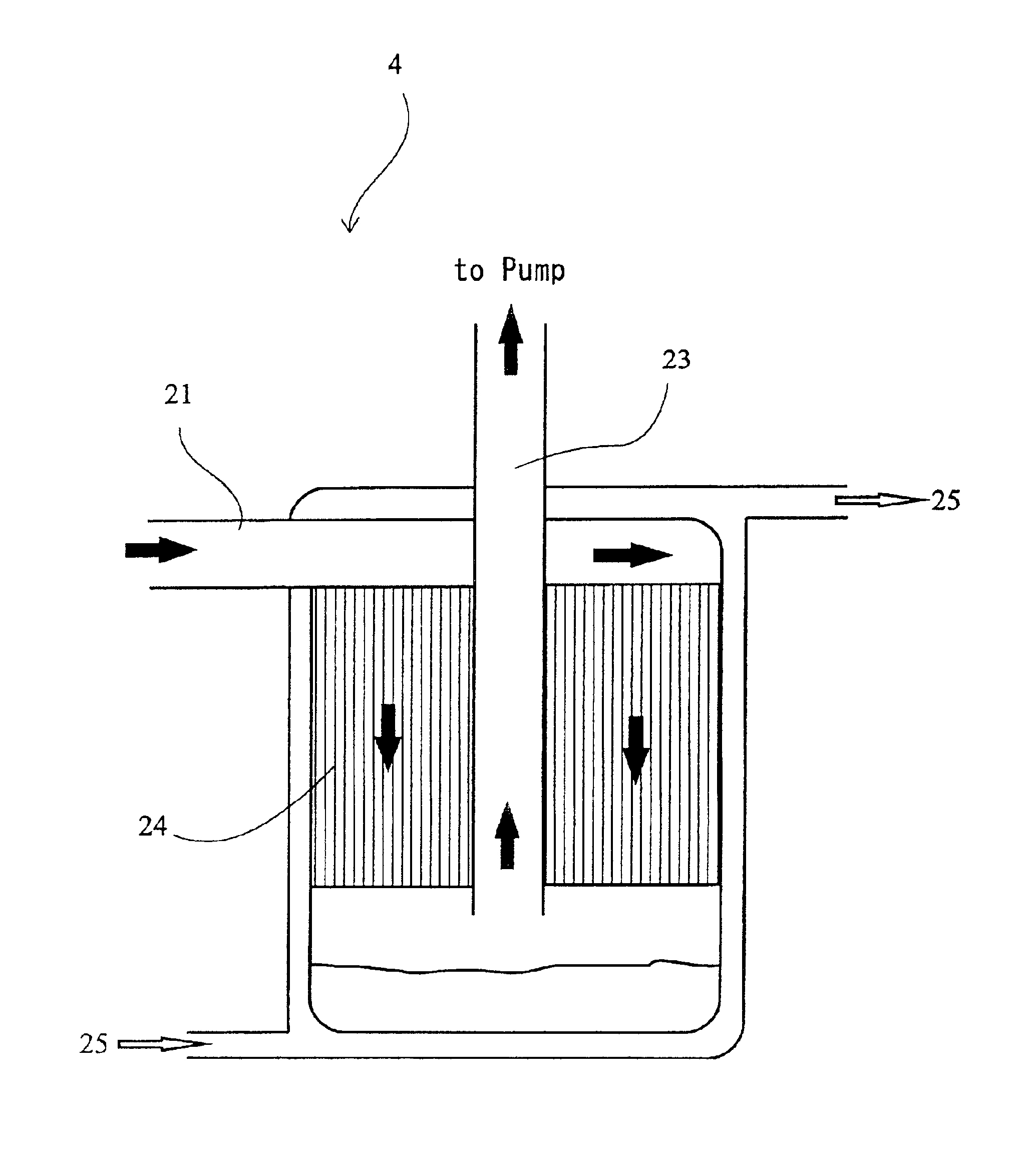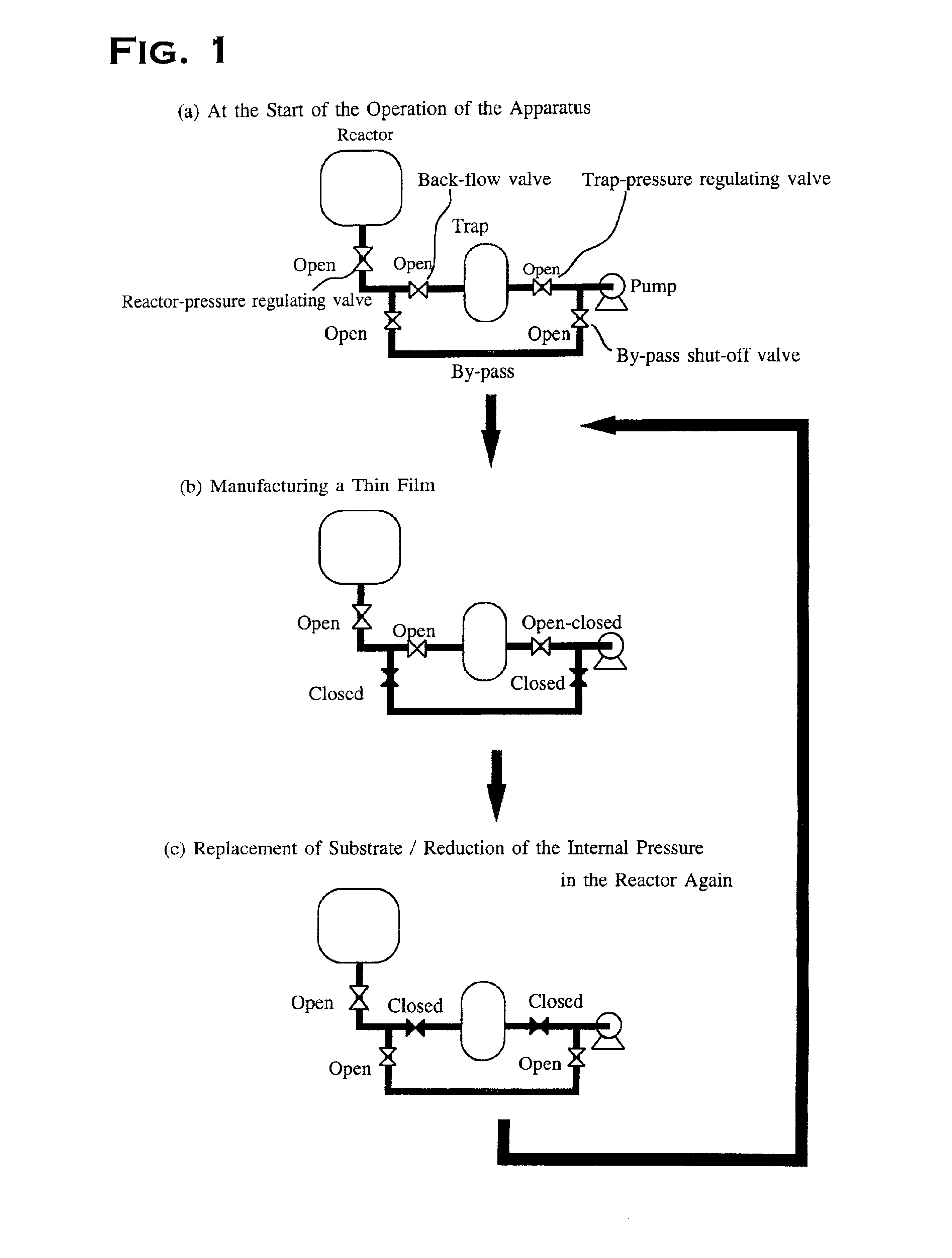Low-pressure CVD apparatus and method of manufacturing a thin film
a cvd apparatus and low-pressure technology, applied in chemical vapor deposition coatings, coatings, metal material coating processes, etc., can solve the problems of increasing the size of the cvd apparatus, increasing the equipment cost, and relatively high cost of manufacturing a thin film
- Summary
- Abstract
- Description
- Claims
- Application Information
AI Technical Summary
Benefits of technology
Problems solved by technology
Method used
Image
Examples
first embodiment
FIG. 2 is a schematic view showing an LPCVD apparatus used in the present embodiment. The LPCVD apparatus 1 shown in FIG. 2 comprises a thermostat 2 serving as a container for enclosing an amount of organometallic compound, a reactor 3, a trap 4 for cooling and condensing a raw material gas used in the reaction, and an exhaust pump 5 for reducing an internal pressure in the reactor 3 and an internal pressure in the trap 4. The reactor 3 contains a substrate 6 and a heater 7 for heating the substrate 6. Further, in the present embodiment, a trap pressure regulating valve 8 for regulating an internal pressure in the trap 4 is disposed between the trap 4 and the exhaust pump 5. Moreover, a reactor pressure regulating valve 9 for regulating an internal pressure in the reactor 3 is provided on the downstream side of the reactor 3. A back-flow valve 10 is provided on the upstream side of the trap 4. In addition, between the downstream side of the reactor pressure regulating valve 9 and th...
PUM
| Property | Measurement | Unit |
|---|---|---|
| length | aaaaa | aaaaa |
| length | aaaaa | aaaaa |
| length | aaaaa | aaaaa |
Abstract
Description
Claims
Application Information
 Login to View More
Login to View More - R&D
- Intellectual Property
- Life Sciences
- Materials
- Tech Scout
- Unparalleled Data Quality
- Higher Quality Content
- 60% Fewer Hallucinations
Browse by: Latest US Patents, China's latest patents, Technical Efficacy Thesaurus, Application Domain, Technology Topic, Popular Technical Reports.
© 2025 PatSnap. All rights reserved.Legal|Privacy policy|Modern Slavery Act Transparency Statement|Sitemap|About US| Contact US: help@patsnap.com



